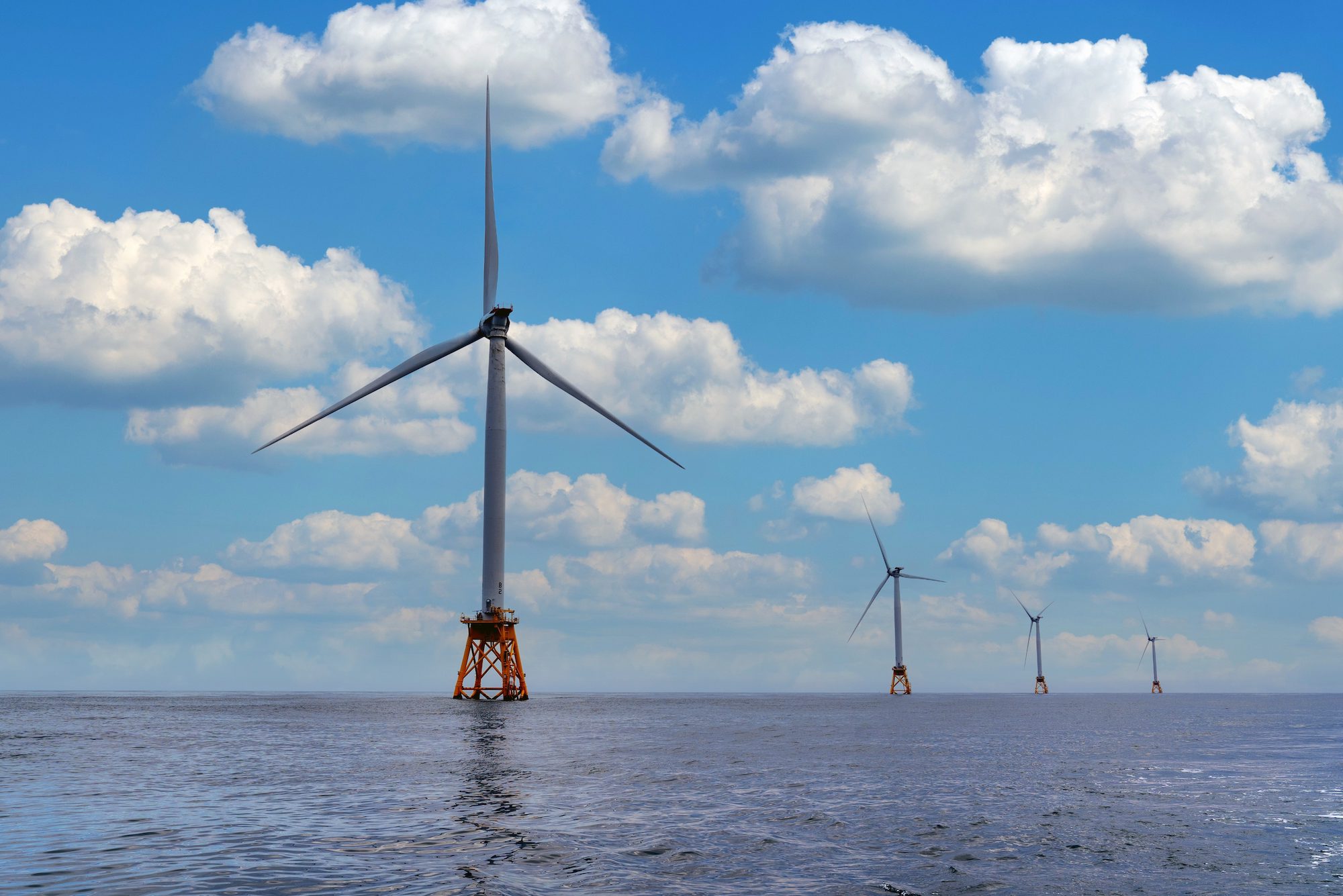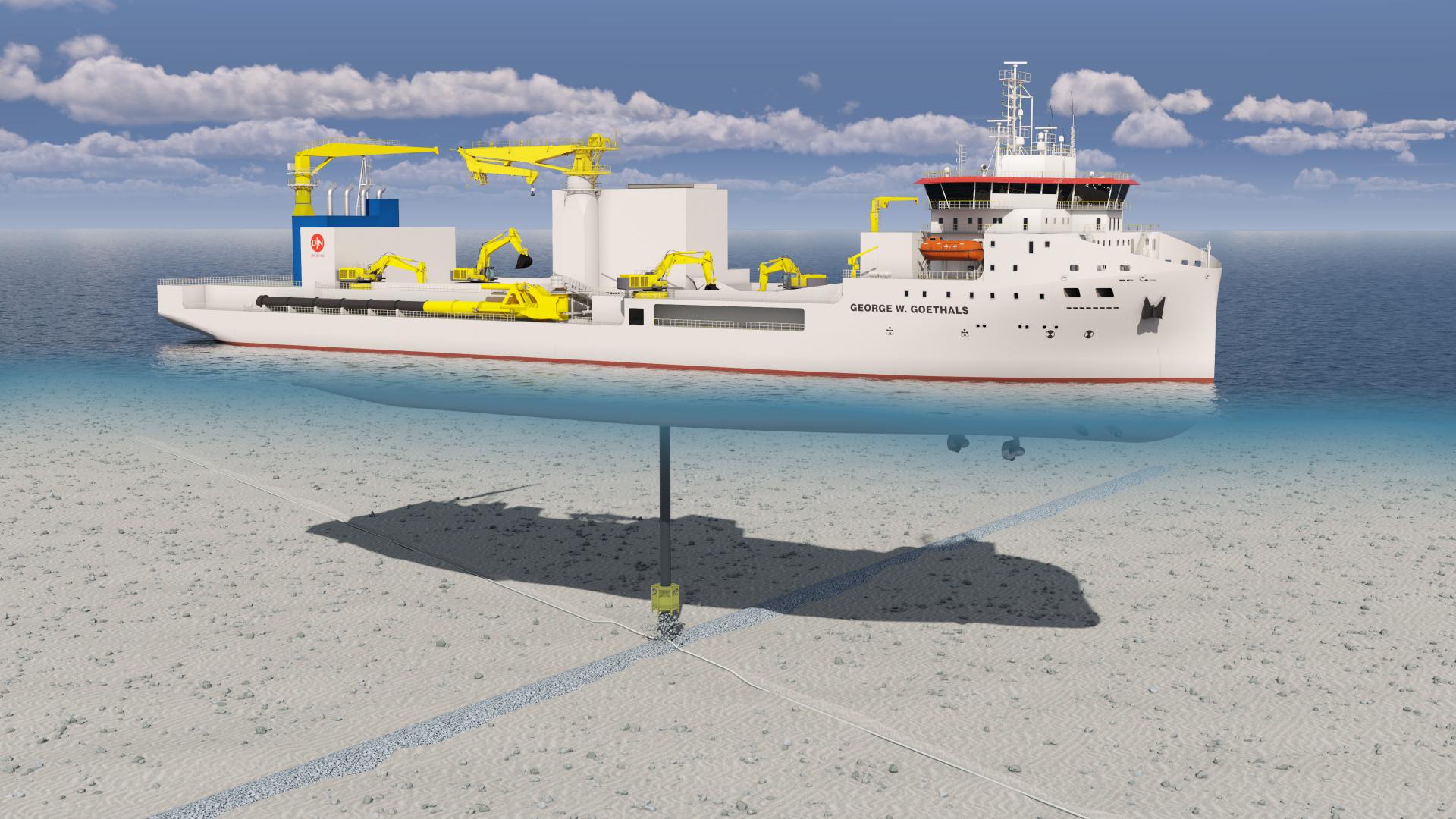By Jennifer A Dlouhy (Bloomberg) —
Companies racing to build multibillion-dollar wind farms in US waters are already contending with surging borrowing costs, supply-chain woes and project pullbacks.
Now, they’ve got a new worry: Donald Trump.
The former US president and presumptive Republican nominee has made no secret of his animus toward wind energy, whether on- or offshore. He famously battled a project within view of his golf course in Aberdeen, Scotland, and has derided wind farms as bird-killing monstrosities. But he has recently ramped up his rhetoric, telling attendees at a Florida fundraiser last month that he hates wind farms, according to people familiar with the matter.
Renewable developers are bracing for more attacks Saturday, when Trump will hold a rally on the beach in Wildwood, New Jersey — a state that’s become the front line for fights over the future of offshore wind.
If Trump returns to the White House next year, analysts say he may target the sector, and even projects that are now fully operating could face peril.
“A Trump administration would be a negative for the offshore wind industry. The question is just to what degree,” said Timothy Fox, a managing director of the Washington, DC-based research firm ClearView Energy Partners. “We’re seeing language from Trump that could suggest a more retaliatory response.”
That could take the form of the US government halting the permitting of new projects or agreeing in court to reconsider approvals for previously authorized wind farms. Trump’s election also could give other officials critical of offshore wind — including in the Pentagon and Commerce Department — more sway.
Trump could even use the playbook written by his rival: Whereas President Joe Biden has made dozens of decisions to advance renewable power projects, Trump could use the same authority to thwart them.
“All of those levers can be used by the Trump administration just as easily as the Biden administration,” said Wayne D’Angelo, an environmental lawyer at Kelley Drye and Warren LLP. “It’s not a one-way ratchet.”
Consider Biden’s January decision to pause new licenses to export natural gas while the government scrutinizes the environmental consequences. Trump could order a similar moratorium on wind farm approvals to further analyze how they affect fishing and wildlife. And just as the Biden administration is forcing oil and gas companies to set aside more money to cover eventual cleanup costs, a future Trump administration could impose hefty financial requirements on offshore wind farms.
Slower timetables could raise costs and chill development of a resource that Northeast states are counting on to supply zero-emission power, with potential implications for companies such as Avangrid Inc., Orsted AS, Shell Plc and Invenergy LLC.
Energy policy experts say that even in the best-case scenario for renewable developers, a second Trump term would mean longer Interior Department reviews of proposed projects and fewer — if any — auctions of new offshore wind leases, as the administration shifts resources and attention toward oil and gas.
Just the prospect of a Trump victory adds to the pressure on the US wind industry, hit by higher costs for key equipment, including towers, turbines and foundations. Wind power foes — including fishing advocates and disgruntled neighbors — also have gone to court to fight federal and state approvals. And US animal protection laws create a prolonged risk because the turbines are being planted in waters that intersect with migration routes for North Atlantic right whales and other dwindling species.
Still, former administration officials say Trump’s personal views on wind farms don’t necessarily spell doom.
When he was in the White House, “he didn’t do anything to stop offshore wind,” said Andrew Wheeler, Trump’s former Environmental Protection Agency administrator and now a partner at Holland and Hart LLP. “I wouldn’t say that industry is in trouble under him.”
The Trump administration continued reviewing proposed offshore wind farms and selling leases to build them, even celebrating a then-record-setting 2018 auction as a “bidding bonanza” that would contribute to American “energy dominance.” And though Trump’s Interior Department delayed a final decision on the Vineyard Wind project off Massachusetts to conduct more environmental review, that extra scrutiny helped bolster the venture against later legal challenges.
Spokespeople for the Trump campaign declined to comment. On the campaign trail, Trump has touted his support for American oil and gas, promising to “drill, baby, drill.”
Offshore wind advocates are preparing to make the case to Trump that the projects mean more American jobs and manufacturing — including big benefits for a US steelmaking sector championed by the former president. And they’re ready to appeal to his experience as a real estate developer, one who may be loathe to see government red tape get in the way of private enterprise.
The wind industry has unleashed $27 billion in spending, including $18 billion tied to shipbuilding, port redevelopment, factory construction and other domestic supply-chain investments, according to the Oceantic Network industry group. Hundreds of millions of dollars are planned in new steel-fabrication plants set to make slabs and wind towers for offshore wind farms.
Industry advocacy has to include educating people “about offshore wind’s key role in enhancing grid reliability and ensuring American’s energy dominance,” said American Clean Power Association spokesperson Jason Ryan.
“Clean energy is a significant, growing and permanent part of the US economy,” he said. “Offshore wind development, in particular, is fueling a domestic supply chain, including shipbuilding, and driving economic growth in coastal communities.”
Wind supporters also are prepared to tap Republican allies in Congress and local government who are already seeing the benefits firsthand. They include Representative Steve Scalise, the Republican majority leader from Louisiana, who has extolled the industry’s benefits for domestic shipbuilding as well as American energy might. “Wind is the newest form of energy we will dominate,” and the US needs more of it, Scalise said last year while visiting a specialty service ship under construction.
In New Jersey, just days before Trump’s rally, state Senator Andrew Zwicker said he knows the industry is facing challenges, with or without Trump. “Momentum is in the wrong direction,” the Democrat said.
Yet there’s big opportunity on the horizon if the industry can weather the economic and political storm, he argued, adding that New Jersey could become the capital of a new “American energy — American-built and American-constructed, right here.”
© 2024 Bloomberg L.P.

 Join The Club
Join The Club










